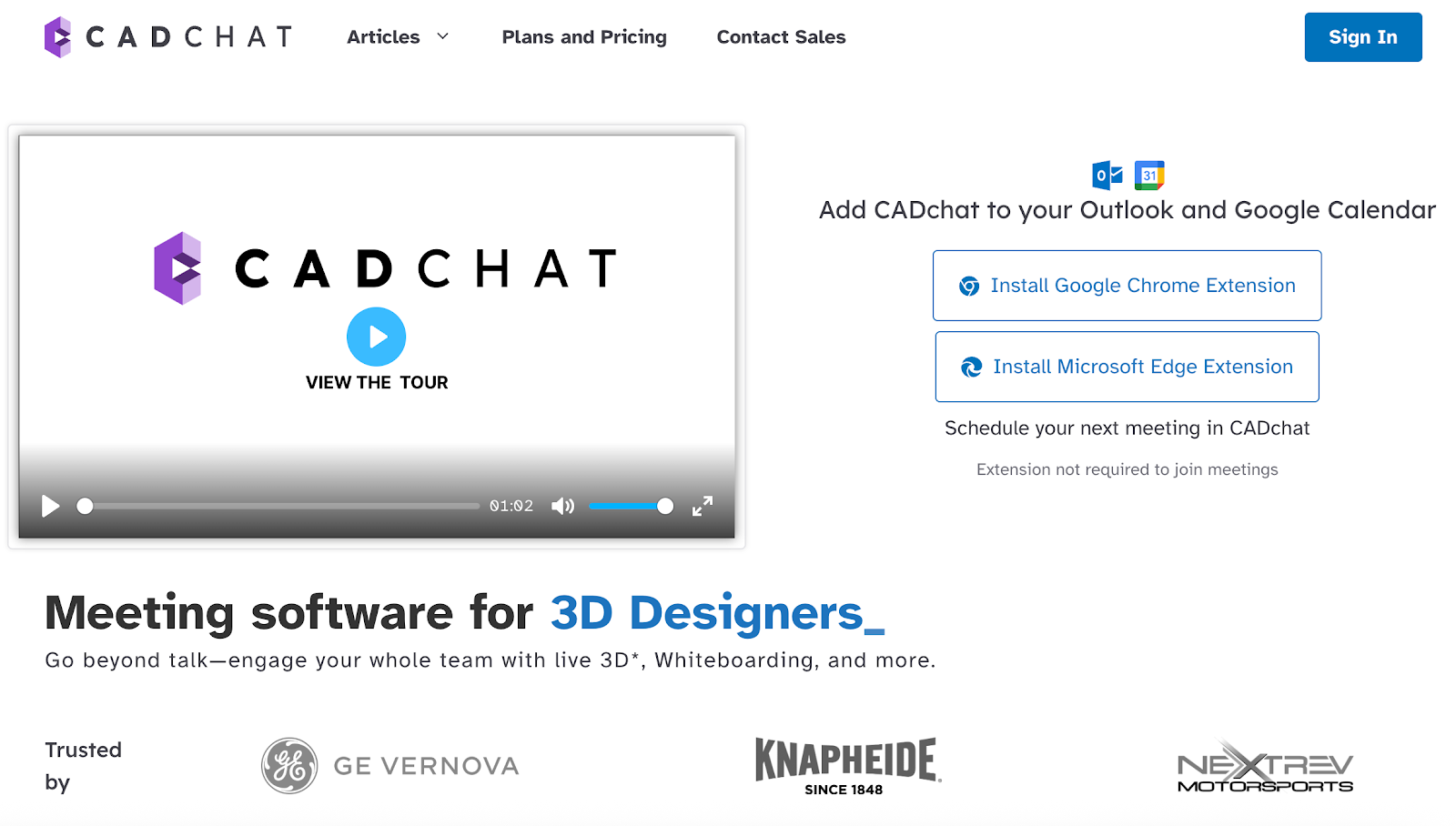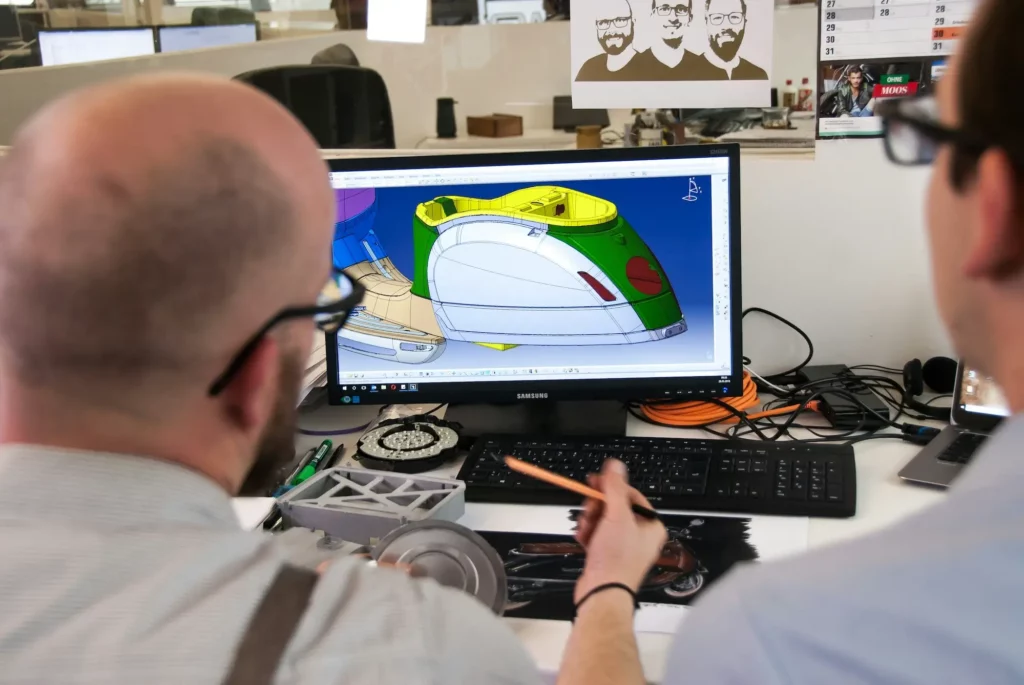Bringing a product to life is not easy. Product teams often face last-minute changes, missed deadlines, and poor communication with suppliers.
When updates are unclear or delayed, the whole process slows down. A small mistake early on can lead to bigger problems later in development.
That’s why strong supplier collaboration matters. Using the right supplier collaboration tools also makes it easier to stay in touch, share updates, and avoid confusion.
In this article, we’ll walk through the top 6 benefits of supplier collaboration that your product team should know.
1. Better Communication and Stronger Relationships
Good products start with clear conversations. When product teams and suppliers talk openly, it’s easier to spot usual CAD problems your team might miss early or didn’t consider before.
Facilitating better communication also means you can share updates with them often and solve problems together.
To build effective supplier collaboration, here’s what you need to do:
- Treat your suppliers as part of the team, not just as vendors.
- Include them in early planning to support better supply chain collaboration from the start.
- Share your goals clearly and focus on regular data sharing to keep everyone aligned.
- Keep communication open to improve trust and reduce delays.
- You can use a design feedback tool to gather feedback faster, and stay on the same page throughout the project.
When teams focus on building collaborative relationships, it leads to better products, fewer delays, and a stronger competitive advantage in the market..
Start collaborating on CAD files with zero setup. Check out CADchat now!
2. Easier Planning and Quicker Reactions
It’s hard to plan when you don’t have the full picture. That’s why real-time data sharing between product teams and suppliers makes such a big difference.
When both sides share updates and changes quickly, it’s easier to adjust schedules, track lead times, and avoid surprises.
This kind of open flow helps teams respond faster when things don’t go as planned. Whether it’s a delay in parts or a shift in demand, teams can develop contingency plans early instead of reacting last minute.
Without this level of CAD collaboration, even small issues can turn into significant disruptions. But when suppliers and product teams work together, they can catch problems early and make changes before things get off track.
Sharing data in real time also builds trust and shows that everyone is working towards the same goal. That makes forecasting more accurate and the whole process a lot smoother.
3. Save Money on Operations
Working closely with suppliers isn’t just good for the workflow; it can also help cut costs. When product teams and suppliers plan together, they often find ways to lower material costs, reduce waste, and use resources more wisely.
Improving supplier collaboration can also lead to real short-term cost savings. For example, choosing a more available material or adjusting a design early can avoid expensive fixes later.
Suppliers often have helpful insights that make a big difference without hurting quality. With their help, you can streamline processes and reduce costs.
When teams and suppliers trust each other, they can plan better, move quickly, and cut costs from beginning to end.
Keep all feedback in one place, not in emails. Contact us to learn how.
4. Stay Ahead of Rules With the Right Supplier Support
One of the key benefits of supplier collaboration is making it easier to meet rules and regulations. From safety standards to material certifications, there’s a lot to keep track of. Working closely with your suppliers helps you stay compliant without slowing down the process.
Open communication is a big part of this. When teams and suppliers share updates early, they can flag issues before they grow. If a regulation changes or a requirement is unclear, quick conversations help clear things up fast.
Suppliers often have deep knowledge of the materials and processes they use. By involving them early, your team can avoid mistakes and reduce the need for rework. They can also help you collect and organize the right documentation as you go.
Following the rules doesn’t have to be a hassle. With clear communication and strong supplier relationships, your team can meet compliance needs while staying on schedule.
5. Stay Flexible When Things Change
Product development rarely goes exactly as planned. Delays, shortages, or last-minute changes can happen at any time.
With enhanced visibility between product teams and suppliers, everyone knows what’s expected, what’s being built, and where improvements are needed.
Using 3D product collaboration software can help you with easier data sharing with your suppliers.
These tools let your suppliers review your designs, leave comments, and suggest fixes based on changes on raw materials, manufacturing limits, or cost concerns.
Agile teams move faster and handle stress better. With good supplier management, your team can stay flexible, bounce back from challenges, and keep moving forward even when things get complicated.
Move faster with real-time and async reviews. Try out CADchat now!
6. Discover New Ideas and Solutions
When product teams and suppliers share ideas early, they often come up with innovative solutions that neither side could create alone. This is where real collaboration can lead to smarter designs and better results.
Suppliers often work with the latest tools and emerging technologies. By involving them in early stages, your team can explore new materials, faster methods, or smarter systems that improve the product.
Some suppliers now use artificial intelligence and machine learning to speed up testing, improve accuracy, or predict outcomes. When your team taps into these tools, it can save time and make better choices from the start.
Joint development also builds stronger relationships. It shows that both sides are invested in the product’s success. When everyone feels like part of the same team, they share more ideas and take more care in their work.
How CADchat Helps Teams Collaborate With Suppliers

Working with suppliers is a key part of the product design process. But it often leads to delays, confusion, and long email threads. CAD files get lost, feedback is unclear, and small mistakes can cause costly rework.
CADchat solves these problems by giving teams and suppliers one shared space to view, review, and comment on 3D models together.
There’s no need to share screens or send files back and forth. Whether you’re working in real time or across time zones, CADchat helps everyone stay aligned and keep the project on track.
Faster Design Feedback With Suppliers
With CADchat, you don’t need to wait days or weeks for supplier input. Teams can invite suppliers to view and review 3D CAD models in real time. This helps spot issues early and avoids delays caused by long email threads or unclear screenshots.
Live Reviews to Solve Manufacturability Issues
Suppliers can join live sessions to check if a design is ready for manufacturing. They can rotate, zoom, and annotate the 3D file directly, no screen sharing needed. This helps resolve DFM (Design for Manufacturing) problems right away and cuts down rework.
Easy Access for Non-CAD Users
Suppliers don’t need to install software or have CAD expertise. CADchat runs in the browser and supports all major CAD formats. They can leave feedback clearly and quickly without needing to convert files or learn new tools.
One Place for Files and Decisions
All files, comments, and revisions are stored in the same digital workspace. Suppliers can always find the latest version and see what decisions have been made, which reduces confusion and keeps everyone on the same page.
Collaborate with your team and suppliers in real time. Try CADchat today!
FAQs About Supplier Collaboration Benefits
Why is effective supplier collaboration important?
Supplier collaboration is important because it helps supply chain partners work more closely, share relevant data in real time, and respond faster to supply chain risks.
It supports better supplier relationship management, improves supplier performance, and helps reduce costs while keeping production schedules on track.
Strong supplier collaboration also helps businesses handle supply chain uncertainty and meet market demands more smoothly.
What are the advantages of a supplier partnership?
A supplier partnership helps build strong supplier relationships, which lead to better supply chain performance and fewer supply disruptions.
Working with key suppliers helps companies run smoothly. It makes it easier to manage stock and react quickly when consumer demand shifts.
These strategic partnerships support sustainable practices and foster innovation using tools like AI-driven analytics and predictive analytics.
What are the key benefits of good collaboration?
The key benefits of good collaboration include reduced operating costs, better inventory levels, and improved customer satisfaction.
When companies and suppliers share data openly and involve suppliers early in the product development process, it leads to more efficient production processes and higher supply chain efficiency.
Good collaboration across the entire supply chain also supports continuous improvement and timely deliveries.
What are the benefits of a collaborative relationship between buyer and supplier?
A collaborative relationship between buyer and supplier helps reduce supply chain disruptions and supports faster responses to supply chain risks. It leads to better alignment with customer demand, strategic planning, and cost efficiency.
These relationships help develop strategies that support sustainability goals, process improvements, and significant cost savings.
This is especially helpful for companies that need to have a competitive edge in increasingly complex global supply chains, such as product teams and healthcare providers.


